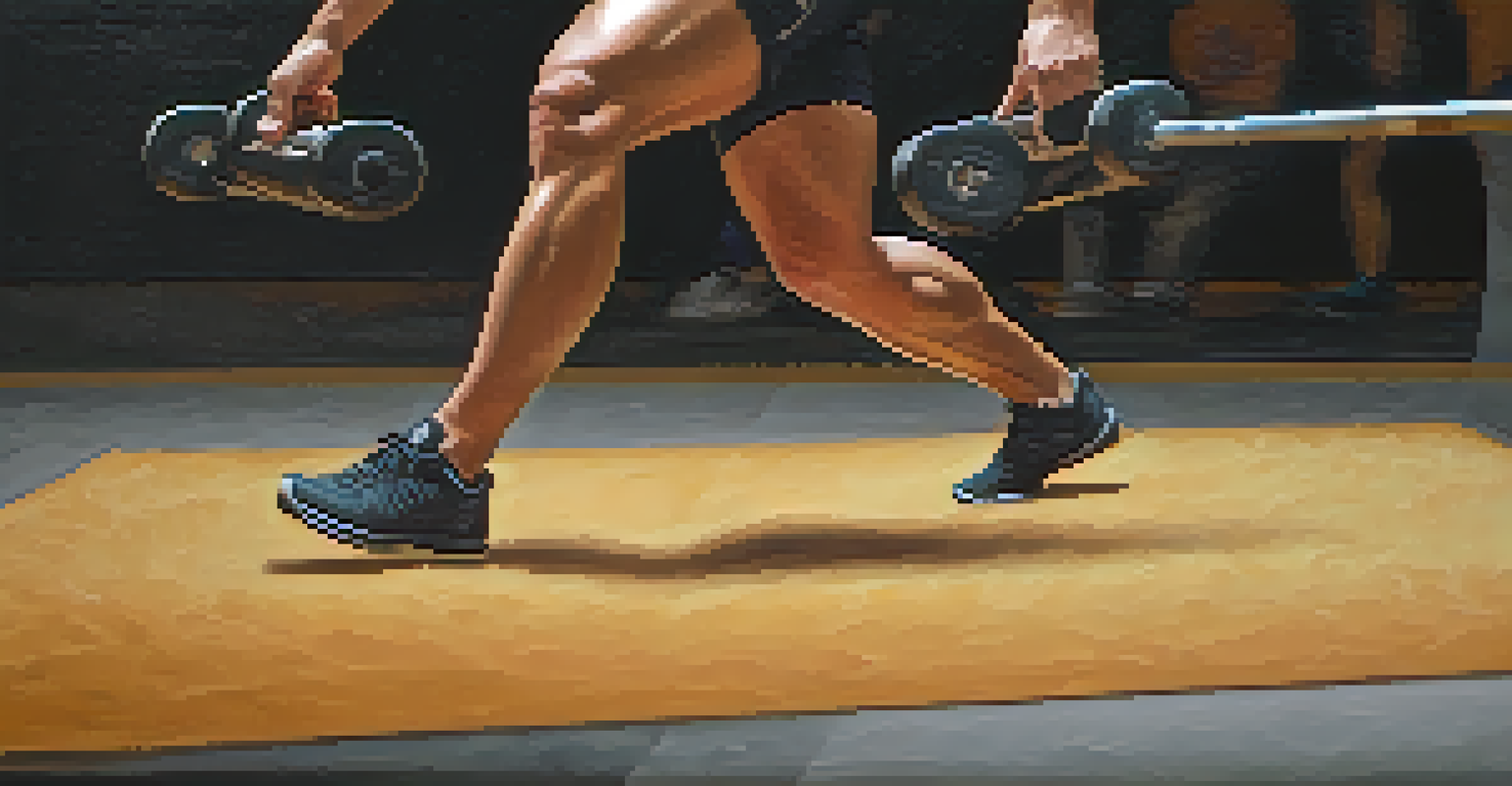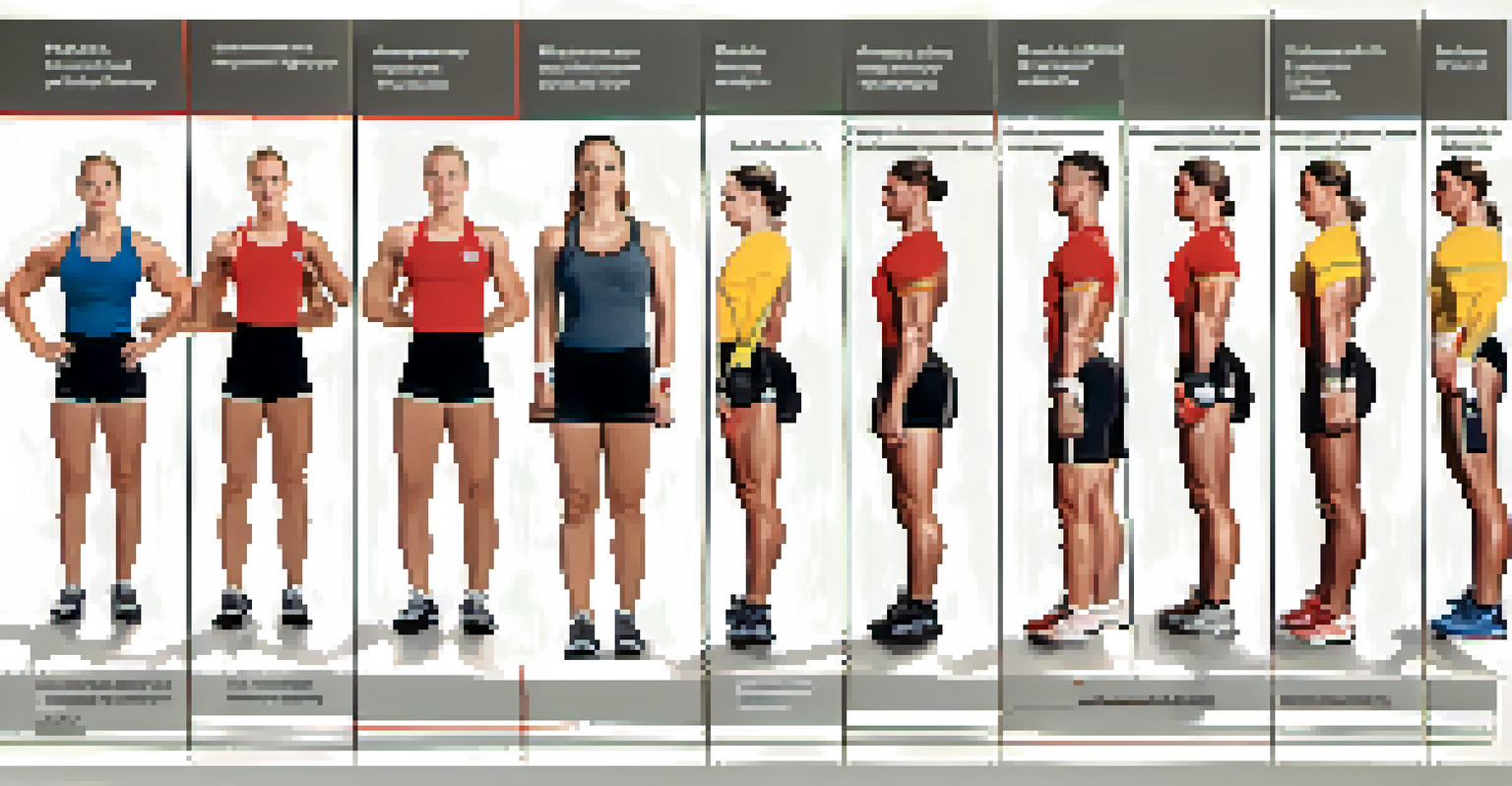Incorporating Dynamic Stretching in Powerlifting Workouts

Understanding Dynamic Stretching and Its Benefits
Dynamic stretching involves moving parts of your body through a full range of motion. Unlike static stretching, which holds a position for a period, dynamic stretching is about movement and preparing your muscles for the work ahead. This type of stretching is particularly beneficial for powerlifters, as it increases blood flow and enhances flexibility.
Dynamic stretching is a crucial component of any warm-up routine, as it helps to prepare the muscles for the work ahead and enhances overall performance.
Incorporating dynamic stretching into your warm-up routine can help prevent injuries by loosening up tight muscles and joints. It also improves your overall performance by activating the muscles you'll be using during your lifts. Think of it as revving up an engine before heading out on the road; it gets everything ready for optimal performance.
Additionally, dynamic stretching can improve your range of motion, allowing you to lift heavier weights more efficiently. Many athletes find that their lifts feel smoother and more controlled after engaging in a proper dynamic warm-up. So, let's explore how to effectively integrate this practice into your powerlifting routine!
Key Dynamic Stretching Exercises for Powerlifting
There are several dynamic stretching exercises that can effectively prepare you for powerlifting. Examples include leg swings, arm circles, and walking lunges. Each of these exercises targets different muscle groups, ensuring a comprehensive warm-up that gets your body ready for the specific demands of powerlifting.

For instance, leg swings not only stretch your hamstrings and hip flexors but also activate your glutes and core, providing a solid foundation for squats and deadlifts. Meanwhile, arm circles can help loosen up your shoulders, which is crucial for bench pressing. By selecting exercises that mimic the movements of your lifts, you ensure that your body is primed to perform.
Dynamic Stretching Boosts Performance
Incorporating dynamic stretching into your warm-up routine enhances flexibility, increases blood flow, and prepares your muscles for lifting.
Incorporating a mix of these exercises into your warm-up can set the stage for a successful lifting session. Aim for 5-10 minutes of dynamic stretching before you start your workout, focusing on the areas that will be most engaged during your lifts. This will not only enhance your performance but also improve your overall workout experience.
Creating a Dynamic Stretching Routine
Building a dynamic stretching routine tailored to your powerlifting needs is essential. Start by selecting 5-6 exercises that target your major muscle groups, such as legs, back, and shoulders. The key is to ensure that your routine flows smoothly, transitioning from one exercise to the next without pause.
The difference between a good lifter and a great lifter often comes down to how well they prepare their body for the demands of their sport.
A well-structured routine might begin with leg swings, followed by walking lunges, and then progress to torso twists and arm circles. This progression not only keeps your heart rate up but also ensures that each muscle group is adequately warmed up. Remember, the goal is to prepare your body for the heavy lifting ahead.
It's also helpful to incorporate sport-specific movements, like hip openers or squat-to-stands, to mimic the lifts you’ll be performing. By customizing your routine, you make sure it aligns perfectly with your workout goals, leading to better results and a lower risk of injury.
Timing Your Dynamic Stretching for Best Results
Timing is crucial when incorporating dynamic stretching into your powerlifting regimen. Ideally, you should perform your dynamic stretches right before your workout, as this is when your muscles are most receptive to warming up. Think of it as a pre-game ritual that gets you mentally and physically prepared for the challenges ahead.
If you stretch too early, such as several hours before your workout, your muscles may cool down, negating the benefits of dynamic stretching. Instead, aim for a 5-10 minute session that immediately precedes your lifting routine. This ensures that your muscles stay warm and ready to perform at their best.
Tailor Your Stretching Routine
Creating a customized dynamic stretching routine that targets major muscle groups ensures optimal preparation for powerlifting.
Moreover, paying attention to how your body feels during your dynamic stretch routine can help you adjust your timing and exercises for optimal performance. If you notice that certain areas feel tight, spend a little more time on those specific stretches. This not only enhances your preparation but also contributes to a more effective lifting session.
Common Mistakes in Dynamic Stretching
While dynamic stretching can be incredibly beneficial, many lifters make common mistakes that can hinder their warm-up. One of the most frequent errors is rushing through the stretches without focusing on proper form or technique. Just as you wouldn't lift heavy weights with poor form, the same principle applies to stretching.
Another mistake is overextending during dynamic stretches, which can lead to injury rather than prevention. It's essential to perform each movement with control and within a comfortable range of motion. If you find yourself straining, dial it back until you find a balance that feels right for your body.
Lastly, some lifters skip dynamic stretching altogether, opting for static stretches instead. This approach can leave your muscles unprepared for the explosive movements required in powerlifting. By being aware of these common pitfalls, you can create a more effective and safe dynamic stretching routine.
Incorporating Mobility Work with Dynamic Stretching
In addition to dynamic stretching, incorporating mobility work can significantly enhance your powerlifting performance. Mobility exercises focus on improving joint range of motion, which is crucial for executing lifts with proper form. Integrating these exercises into your warm-up can further prepare your body for the demands of heavy lifting.
For example, hip mobility drills can help ensure that your hips are flexible and strong enough to handle squats and deadlifts. Similarly, shoulder mobility exercises can enhance your bench press performance by ensuring your shoulders are adequately prepared. By combining dynamic stretches with mobility work, you're setting yourself up for success.
Avoid Common Stretching Mistakes
Being mindful of proper form and timing can prevent injuries and make dynamic stretching more effective for powerlifters.
The beauty of this approach is that it not only improves your lifting performance but also contributes to your overall athleticism. As you become more mobile, you'll likely find that your lifts feel smoother, and you can achieve better positions, leading to increased strength and stability.
Tracking Progress and Adjusting Your Routine
As with any aspect of your powerlifting training, tracking your progress with dynamic stretching is essential. Take note of how your lifts feel before and after incorporating dynamic stretches into your routine. Are you lifting heavier weights? Do your movements feel more fluid? Keeping a journal can help you identify patterns and areas for improvement.
Additionally, be open to adjusting your dynamic stretching routine based on your experience and performance. If you find certain stretches are particularly beneficial, consider emphasizing them in your warm-up. Conversely, if some exercises don't seem to help, don't hesitate to replace them with alternatives that work better for you.

Remember, the goal is to create a warm-up routine that not only prepares your body for lifting but also evolves with your training. By staying attentive to your progress and adjusting your routine as needed, you can optimize your performance and continue making gains in your powerlifting journey.